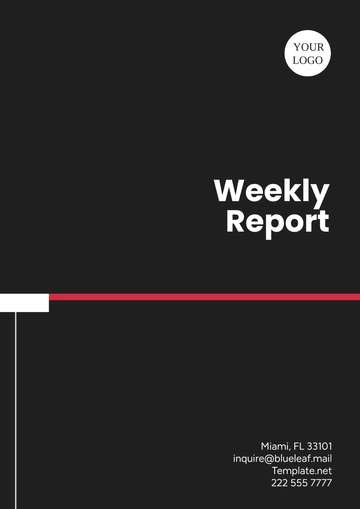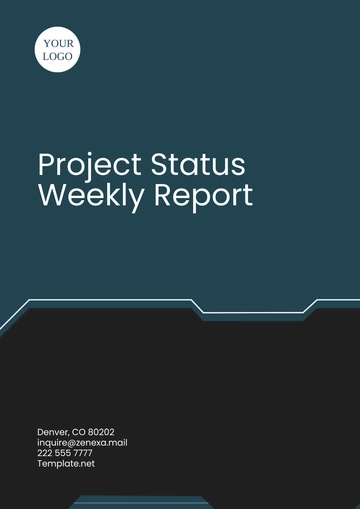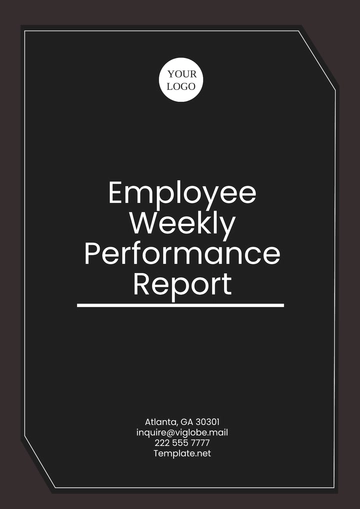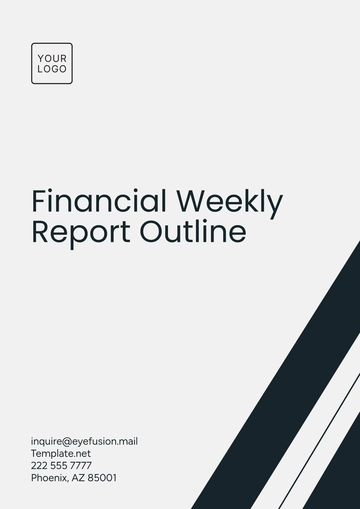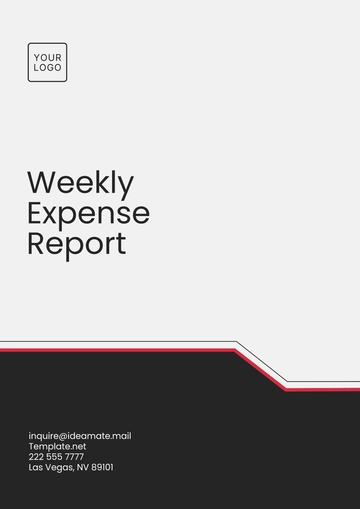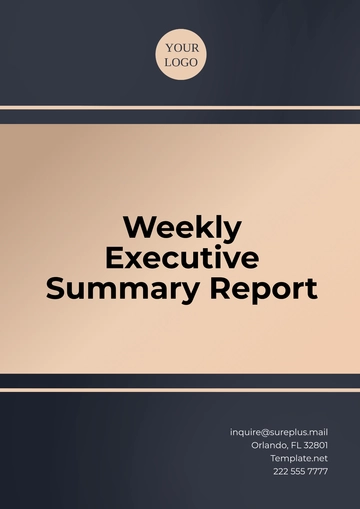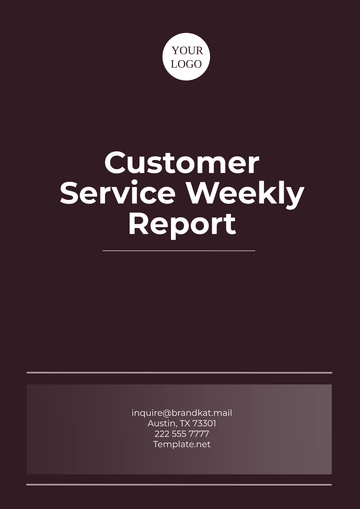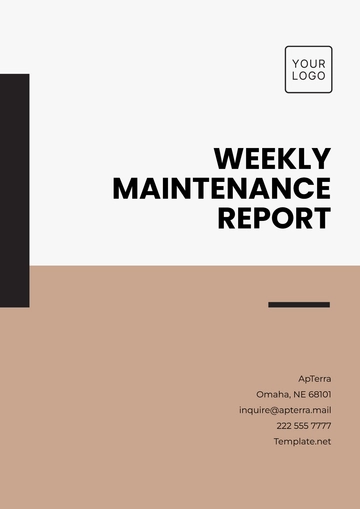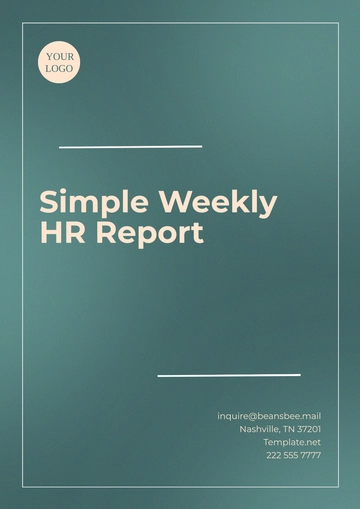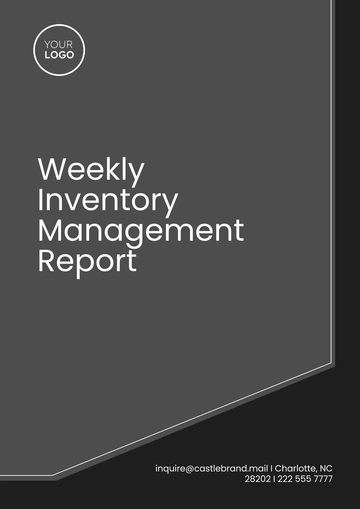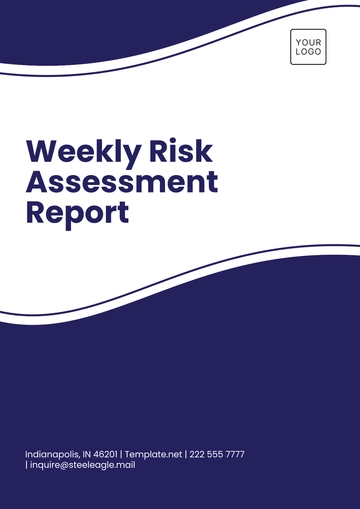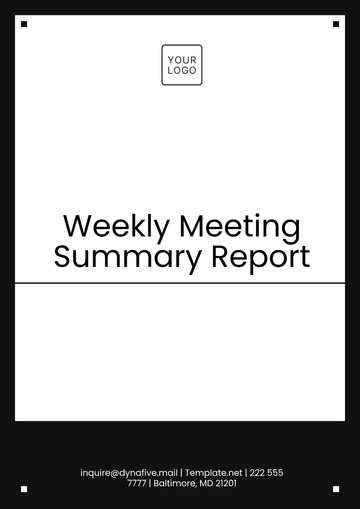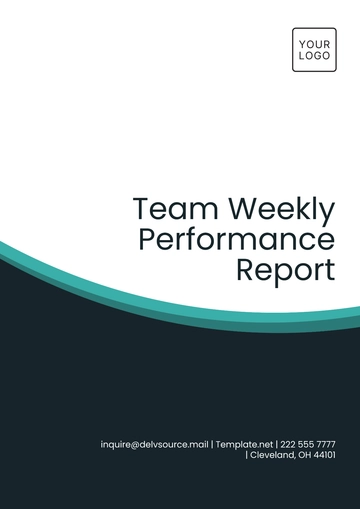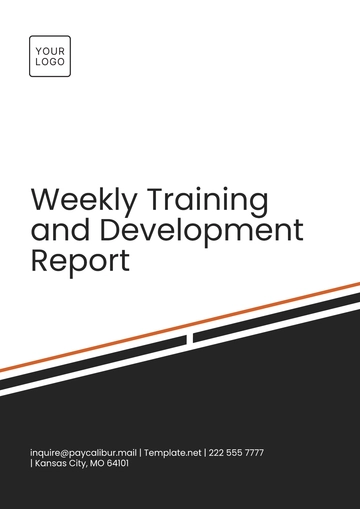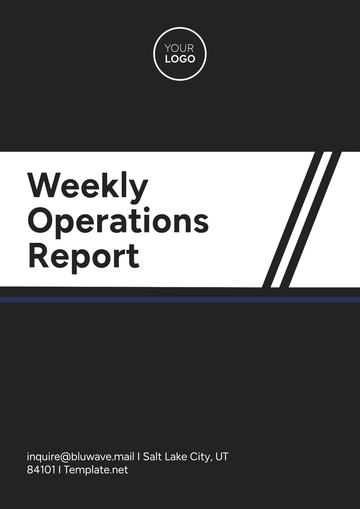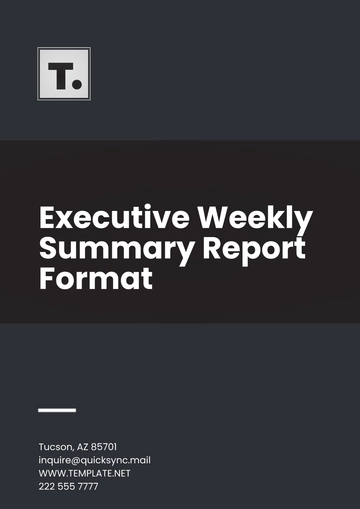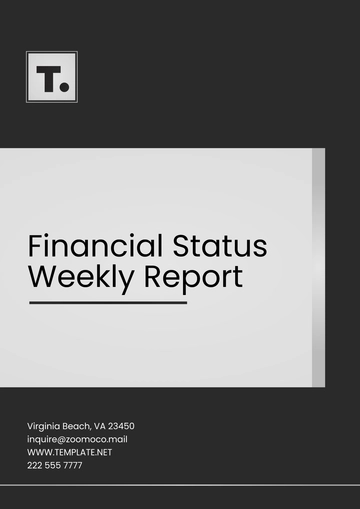Free Movie Theater Report
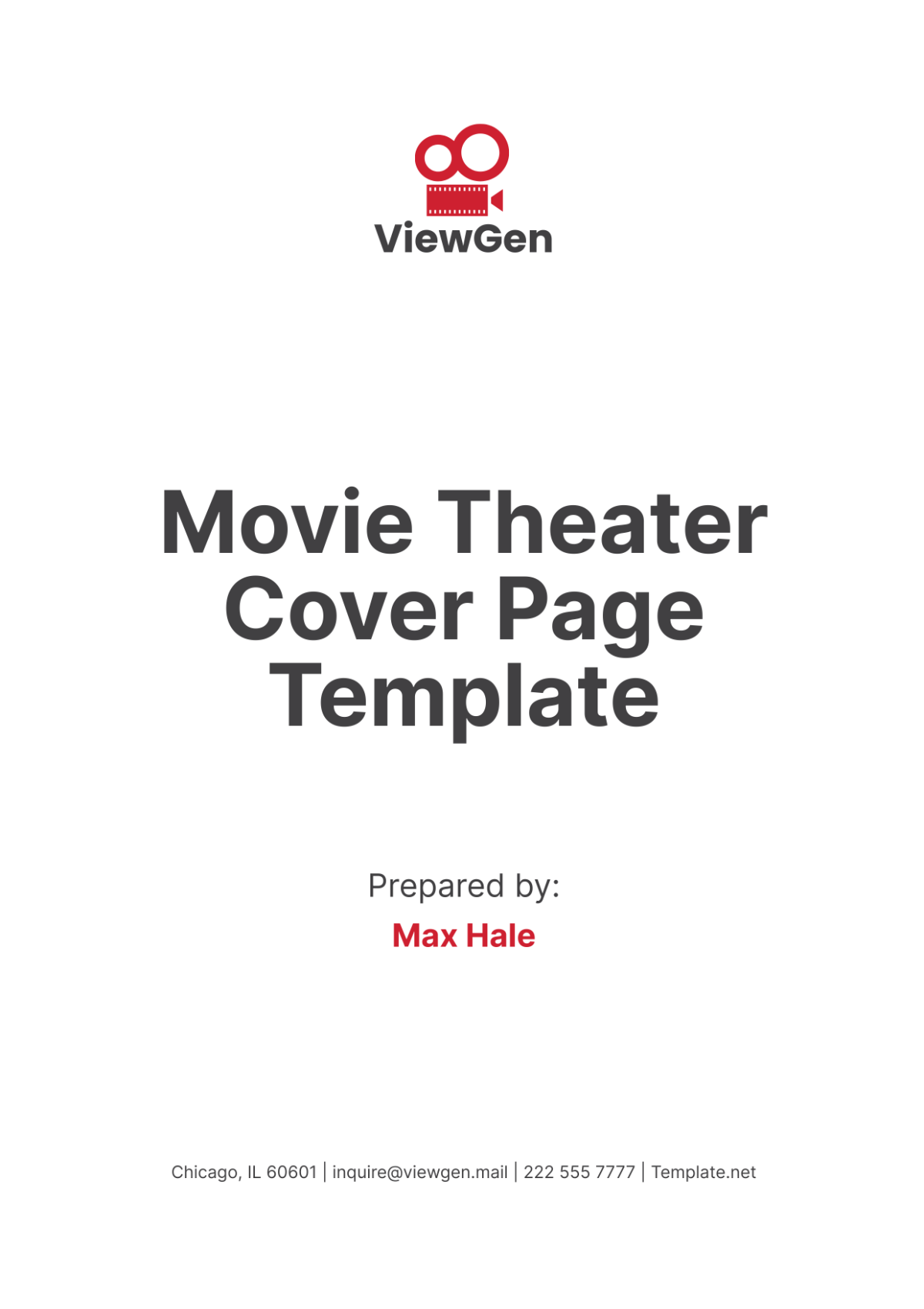
I. Executive Summary
The purpose of this detailed report is to comprehensively analyze the operational, financial, and customer satisfaction aspects of the movie theater operated by [Your Company Name]. Spanning the period from January 1, 2050, to December 31, 2050, this report delves into attendance trends, revenue streams, expense management, customer feedback, and strategic recommendations for future improvements. The findings aim to support strategic decision-making and enhance overall performance and profitability.
II. Introduction
A. Background
[Your Company Name], a prominent entity in the entertainment industry, owns and operates a modern movie theater located at [Your Company Address]. Since its establishment in 2050, the theater has become a cultural hub and a popular destination for movie enthusiasts in the region. Featuring 12 screens, including 2 IMAX screens and 4 3D screens, the theater offers a diverse selection of movies to cater to varied audience preferences and enhance the movie-watching experience.
The strategic location of the theater, coupled with its state-of-the-art facilities and commitment to quality service, has positioned [Your Company Name] as a leader in the local entertainment landscape. The theater's success is rooted in its ability to consistently deliver high-quality entertainment while adapting to evolving industry trends and customer expectations.
B. Objectives
Operational Performance Analysis: Evaluate the theater's operational efficiency, including attendance patterns, screen utilization rates, and staffing effectiveness.
Financial Outcome Assessment: Analyze revenue generation from box office sales and concessions, alongside expense management, to determine overall profitability and financial health.
Customer Satisfaction Evaluation: Measure customer satisfaction levels through feedback and surveys to identify strengths and areas for improvement in service delivery and customer experience.
Strategic Recommendations: Provide actionable insights and recommendations to optimize operations, enhance revenue streams, and improve customer satisfaction for sustained growth and competitive advantage.
III. Operational Analysis
A. Attendance
Monthly Attendance Figures
Attendance figures fluctuated throughout the year, influenced by factors such as movie releases, seasonal trends, and promotional activities. The theater consistently attracted a diverse audience, with attendance peaking during blockbuster releases and holiday periods. Notably, July recorded the highest attendance with 19,890 attendees, underscoring the theater's capacity to draw crowds during peak movie seasons.
Month
Total Attendance
IMAX Attendance
3D Attendance
January
12,345
3,210
2,678
February
13,789
3,450
2,890
March
15,456
3,678
3,012
April
14,123
3,567
2,889
May
16,890
3,910
3,456
June
18,234
4,123
3,678
July
19,890
4,678
3,910
August
17,456
4,123
3,567
September
15,789
3,678
3,012
October
16,234
3,890
3,345
November
17,678
4,123
3,567
December
18,890
4,456
3,789
The data reveals a consistent interest in premium movie formats, with IMAX and 3D screenings contributing significantly to overall attendance figures. This trend underscores the importance of offering enhanced viewing experiences to attract and retain audiences.
Average Daily Attendance
Throughout the year, the theater averaged approximately 517 attendees per day. This metric serves as a key performance indicator, reflecting the theater's ability to maintain steady audience engagement across weekdays and weekends alike.
Variations in daily attendance were observed in correlation with movie releases and promotional events, highlighting the impact of content selection and marketing strategies on audience turnout.
B. Showtimes and Screen Utilization
Average Showtimes Per Day
The theater operated an average of 5 showtimes per screen daily, totaling 60 showtimes across all screens. During peak periods, such as weekends and holidays, showtimes were increased to accommodate higher audience demand and optimize screen utilization.
Adjustments in showtime schedules were strategically implemented based on historical attendance data and predictive analytics to ensure efficient use of theater resources while maximizing revenue opportunities.
Screen Utilization Rate
Screen Type
Utilization Rate
Standard
85%
IMAX
90%
3D
88%
IMAX and 3D screens consistently demonstrated higher utilization rates compared to standard screens, indicating strong audience preference for immersive and premium viewing experiences. This data informs future programming decisions and resource allocation strategies to optimize screen utilization and enhance overall operational efficiency.
C. Staffing
Staffing Levels
The theater maintained a dedicated team of 50 staff members throughout the year, comprising managerial, customer service, and technical roles. Staffing levels were dynamically adjusted in response to fluctuating attendance patterns and operational demands, ensuring optimal service delivery and customer satisfaction.
During peak periods, additional staff were deployed to manage increased foot traffic and maintain operational standards. Staffing decisions were informed by real-time data analysis and performance metrics to align with business objectives and enhance operational agility.
Training and Development
Continuous staff training and development initiatives were integral to maintaining service excellence and operational efficiency. Employees participated in regular workshops and seminars focused on customer service enhancement, technical proficiency, and safety protocols.
Training programs emphasized the importance of proactive customer engagement, conflict resolution skills, and product knowledge to foster a culture of continuous improvement and professional growth among theater staff. Feedback from training sessions was actively solicited to tailor learning experiences to individual and team needs, ensuring a skilled workforce capable of delivering exceptional service experiences to patrons.
IV. Financial Analysis
A. Revenue
Monthly Revenue Breakdown
Revenue generation at the theater was driven by box office sales and concession revenues, both of which varied seasonally and in response to programming strategies and promotional campaigns. The data below highlights monthly revenue trends for the reporting period.
Month
Box Office Revenue
Concession Revenue
Total Revenue
January
$123,450
$34,890
$158,340
February
$137,890
$36,450
$174,340
March
$154,560
$39,890
$194,450
April
$141,230
$38,567
$179,797
May
$169,890
$42,456
$212,346
June
$182,340
$45,678
$228,018
July
$198,900
$49,890
$248,790
August
$174,560
$44,567
$219,127
September
$157,890
$40,123
$198,013
October
$162,340
$41,890
$204,230
November
$177,678
$45,123
$222,801
December
$188,900
$48,456
$237,356
The highest monthly revenue was recorded in July at $248,790, driven by the release of highly anticipated movies and effective promotional campaigns. Conversely, January experienced the lowest revenue at $158,340, reflecting typical post-holiday spending trends and seasonal variations in consumer behavior.
Revenue by Source
Box office sales constituted the primary revenue stream, accounting for approximately 75% of total revenue throughout the reporting period. Concession sales contributed the remaining 25%, highlighting the significance of food and beverage offerings in enhancing overall revenue generation and profitability.
Strategic pricing strategies and promotional bundles were employed to stimulate concession sales and maximize revenue per patron. The integration of digital payment solutions and loyalty programs further facilitated seamless transactions and enhanced customer satisfaction, thereby supporting revenue growth initiatives.
B. Expenses
Monthly Expense Breakdown
Operational expenses encompassed salaries and wages, utilities, maintenance, and other operational overheads necessary for the day-to-day management of the theater. The following table outlines monthly expense allocations for the reporting period.
Month
Salaries and Wages
Utilities
Maintenance
Total Expenses
January
$45,000
$12,000
$5,000
$62,000
February
$46,500
$12,500
$5,200
$64,200
March
$48,000
$13,000
$5,400
$66,400
April
$47,500
$12,800
$5,300
$65,600
May
$49,000
$13,200
$5,600
$68,000
June
$50,500
$13,500
$5,700
$69,700
July
$52,000
$14,000
$6,400
$72,400
August
$51,000
$13,700
$4,200
$68,900
September
$48,500
$13,300
$4,800
$66,600
October
$49,500
$13,500
$4,300
$67,300
November
$50,000
$13,800
$5,500
$69,300
December
$51,500
$14,000
$5,700
$71,200
Operational expenses were carefully managed to optimize cost efficiency while maintaining high standards of service and facility maintenance. Variations in monthly expenses reflected seasonal adjustments and strategic investments aimed at enhancing operational capabilities and customer satisfaction.
Expense Categories
Expense Category
Percentage of Total Expenses
Salaries and Wages
72%
Utilities
15%
Maintenance
13%
Salaries and wages constituted the largest expense category, reflecting the theater's commitment to maintaining a skilled workforce capable of delivering exceptional customer service and operational excellence. Utilities and maintenance expenses were prioritized to ensure optimal facility performance and guest comfort, thereby supporting long-term sustainability and operational resilience.
V. Customer Satisfaction
A. Survey Results
Customer Satisfaction Ratings
Customer satisfaction ratings provided valuable insights into the theater's performance across various service attributes. The following table summarizes customer ratings on key aspects of the movie-watching experience.
Aspect
Rating (Out of 5)
Cleanliness
4.5
Staff Friendliness
4.7
Screen Quality
4.8
Sound Quality
4.6
Concession Variety
4.2
Overall Experience
4.6
The theater received consistently high ratings, with screen quality achieving the highest rating of 4.8. Staff friendliness and overall experience also received commendable ratings, reflecting positive customer perceptions of service quality and facility standards.
Customer Feedback
Customer feedback highlighted strengths such as cleanliness, staff friendliness, and superior audiovisual technology. Patrons appreciated the immersive viewing experiences offered by IMAX and 3D screenings, underscoring the theater's ability to meet and exceed audience expectations for premium entertainment.
Areas for improvement included expanding concession offerings to cater to diverse tastes and preferences. Customer suggestions for enhancing the overall movie-watching experience included introducing healthier snack options, enhancing seating comfort, and optimizing queue management during peak hours.
B. Social Media and Online Reviews
Positive Reviews
The theater garnered positive reviews across various social media platforms and online review websites, reflecting strong community support and customer loyalty. Patrons praised the theater's comfortable seating, exceptional sound systems, and engaging movie lineup as key factors contributing to their positive experiences.
Effective social media engagement and proactive response to customer feedback further strengthened the theater's reputation as a preferred destination for entertainment enthusiasts, fostering a robust online presence and driving customer acquisition and retention efforts.
Areas for Improvement
Constructive feedback from online reviews identified opportunities to streamline concession services, minimize wait times during peak periods, and enhance technical reliability during movie screenings. Addressing these areas can further elevate customer satisfaction levels and reinforce the theater's competitive edge in the local market.
VI. Recommendations
A. Revenue Enhancement
Expand Concession Offerings
Introducing a broader range of food and beverage options, including healthier choices and gourmet selections, can diversify revenue streams and cater to evolving consumer preferences. Collaborating with local vendors and incorporating seasonal menus can enhance menu variety and appeal to a wider audience demographic.
Implement Loyalty Programs
Launching a comprehensive loyalty program that rewards frequent moviegoers with exclusive discounts, complimentary tickets, and personalized offers can foster customer loyalty and stimulate repeat visits. Integration with mobile apps and digital platforms can streamline program enrollment and reward redemption, enhancing customer engagement and retention.
B. Cost Reduction
Energy Efficiency Measures
Investing in energy-efficient lighting and HVAC systems can reduce operational costs and environmental impact while ensuring optimal comfort and sustainability. Implementing automated controls and smart energy management solutions can further optimize resource utilization and minimize utility expenses over time.
Optimize Staffing
Leveraging predictive analytics and attendance forecasting tools to optimize staffing levels can align workforce deployment with fluctuating demand patterns. Implementing flexible scheduling policies and cross-training initiatives can enhance operational agility and workforce productivity while maintaining service excellence and guest satisfaction.
C. Customer Experience Improvement
Enhanced Movie Offerings
Curating a diverse and compelling movie lineup that includes blockbuster releases, independent films, and special screenings (e.g., classic movies, live events) can attract a broader audience demographic and cater to varied entertainment preferences. Collaborating with film distributors and leveraging market insights can inform programming decisions and maximize audience engagement.
Facility Upgrades
Investing in premium seating options, state-of-the-art projection technology, and immersive audiovisual enhancements can elevate the overall movie-watching experience and justify premium ticket pricing. Renovating concession areas to enhance layout efficiency and customer flow can streamline service operations and optimize revenue generation from food and beverage sales.
D. Marketing Strategies
Social Media Campaigns
Launching targeted social media campaigns to promote upcoming movie releases, special events, and exclusive offers can amplify brand visibility and drive ticket sales. Engaging with influencers and leveraging user-generated content can expand reach and cultivate a vibrant online community of movie enthusiasts, enhancing brand advocacy and customer loyalty.
Community Engagement
Strengthening community partnerships through sponsorships, local events, and charitable initiatives can deepen the theater's roots within the local community. Hosting themed movie nights, film festivals, and educational screenings can foster cultural enrichment and cultivate a loyal customer base, positioning the theater as a cultural hub and preferred entertainment venue.
VII. Conclusion
The movie theater operated by [Your Company Name] demonstrated robust operational performance and financial resilience throughout the reporting period. Strategic initiatives in attendance management, revenue optimization, and customer satisfaction have contributed to sustained growth and competitive advantage within the entertainment industry.
Moving forward, implementing the recommended strategies outlined in this report will further enhance operational efficiency, expand revenue streams, and elevate customer satisfaction levels. By prioritizing innovation, service excellence, and community engagement, [Your Company Name] is well-positioned to continue its legacy as a premier destination for cinematic entertainment and cultural enrichment in the region.
VIII. Appendices
A. Detailed Monthly Data
Attendance Data
Month | Total Attendance | IMAX Attendance | 3D Attendance |
|---|---|---|---|
January | 12,345 | 3,210 | 2,678 |
February | 13,789 | 3,450 | 2,890 |
March | 15,456 | 3,678 | 3,012 |
April | 14,123 | 3,567 | 2,889 |
May | 16,890 | 3,910 | 3,456 |
June | 18,234 | 4,123 | 3,678 |
July | 19,890 | 4,678 | 3,910 |
August | 17,456 | 4,123 | 3,567 |
September | 15,789 | 3,678 | 3,012 |
October | 16,234 | 3,890 | 3,345 |
November | 17,678 | 4,123 | 3,567 |
December | 18,890 | 4,456 | 3,789 |
Financial Data
Month | Box Office Revenue | Concession Revenue | Total Revenue | Total Expenses | Net Profit |
|---|---|---|---|---|---|
January | $123,450 | $34,890 | $158,340 | $62,000 | $96,340 |
February | $137,890 | $36,450 | $174,340 | $64,200 | $110,140 |
March | $154,560 | $39,890 | $194,450 | $66,400 | $128,050 |
April | $141,230 | $38,567 | $179,797 | $65,600 | $114,197 |
May | $169,890 | $42,456 | $212,346 | $68,000 | $144,346 |
June | $182,340 | $45,678 | $228,018 | $69,700 | $158,318 |
July | $198,900 | $49,890 | $248,790 | $72,400 | $176,390 |
August | $174,560 | $44,567 | $219,127 | $68,900 | $150,227 |
September | $157,890 | $40,123 | $198,013 | $66,600 | $131,413 |
October | $162,340 | $41,890 | $204,230 | $67,300 | $136,930 |
November | $177,678 | $45,123 | $222,801 | $69,300 | $153,501 |
December | $188,900 | $48,456 | $237,356 | $71,200 | $166,156 |
B. Customer Feedback Examples
Positive Feedback
"I love coming to this theater! The screens and sound are amazing, and the staff is always friendly and helpful. It's my go-to place for movie nights." - [Customer Name]
Constructive Feedback
"The concession stand could use more variety, and the lines can get pretty long. Also, there were some technical issues during my last visit, but overall, it's a great theater." - [Customer Name]
C. Technical Specifications
Screen and Sound Systems
The theater is equipped with state-of-the-art projection technology, including 4K projectors and Dolby Atmos sound systems, ensuring an immersive and high-quality viewing experience.
Seating Capacity
The total seating capacity of the theater is 2,400, with individual screens ranging from 150 to 400 seats. The seating is designed for maximum comfort, with reclining options available in premium sections.
IX. References
Box Office Mojo. (2050). Annual Movie Revenue Report.
National Association of Theatre Owners. (2050). Theater Attendance Statistics.
Customer Satisfaction Surveys. (2050). [Your Company Name] Movie Theater Feedback.
- 100% Customizable, free editor
- Access 1 Million+ Templates, photo’s & graphics
- Download or share as a template
- Click and replace photos, graphics, text, backgrounds
- Resize, crop, AI write & more
- Access advanced editor
Create detailed reports with the Movie Theater Report Template from Template.net. It's customizable and editable, designed for comprehensive analysis. Utilize our Ai Editor Tool to compile data, providing insights into attendance, revenue, and performance in your movie theater.
You may also like
- Sales Report
- Daily Report
- Project Report
- Business Report
- Weekly Report
- Incident Report
- Annual Report
- Report Layout
- Report Design
- Progress Report
- Marketing Report
- Company Report
- Monthly Report
- Audit Report
- Status Report
- School Report
- Reports Hr
- Management Report
- Project Status Report
- Handover Report
- Health And Safety Report
- Restaurant Report
- Construction Report
- Research Report
- Evaluation Report
- Investigation Report
- Employee Report
- Advertising Report
- Weekly Status Report
- Project Management Report
- Finance Report
- Service Report
- Technical Report
- Meeting Report
- Quarterly Report
- Inspection Report
- Medical Report
- Test Report
- Summary Report
- Inventory Report
- Valuation Report
- Operations Report
- Payroll Report
- Training Report
- Job Report
- Case Report
- Performance Report
- Board Report
- Internal Audit Report
- Student Report
- Monthly Management Report
- Small Business Report
- Accident Report
- Call Center Report
- Activity Report
- IT and Software Report
- Internship Report
- Visit Report
- Product Report
- Book Report
- Property Report
- Recruitment Report
- University Report
- Event Report
- SEO Report
- Conference Report
- Narrative Report
- Nursing Home Report
- Preschool Report
- Call Report
- Customer Report
- Employee Incident Report
- Accomplishment Report
- Social Media Report
- Work From Home Report
- Security Report
- Damage Report
- Quality Report
- Internal Report
- Nurse Report
- Real Estate Report
- Hotel Report
- Equipment Report
- Credit Report
- Field Report
- Non Profit Report
- Maintenance Report
- News Report
- Survey Report
- Executive Report
- Law Firm Report
- Advertising Agency Report
- Interior Design Report
- Travel Agency Report
- Stock Report
- Salon Report
- Bug Report
- Workplace Report
- Action Report
- Investor Report
- Cleaning Services Report
- Consulting Report
- Freelancer Report
- Site Visit Report
- Trip Report
- Classroom Observation Report
- Vehicle Report
- Final Report
- Software Report
